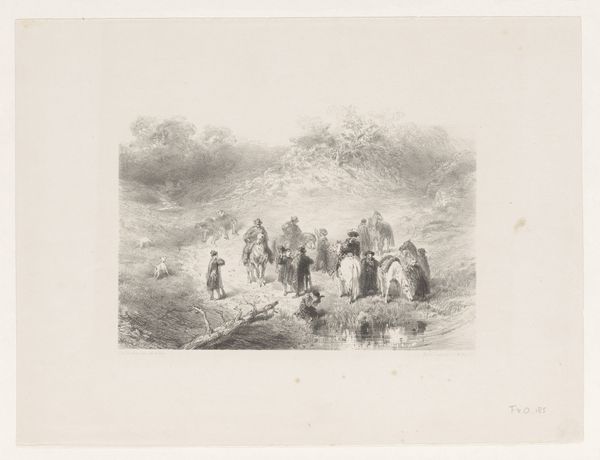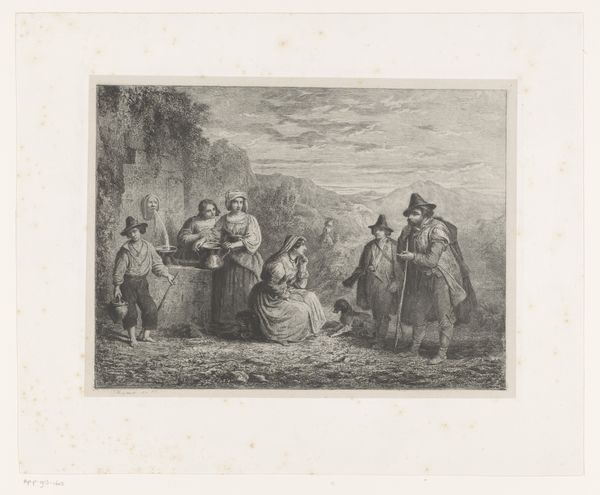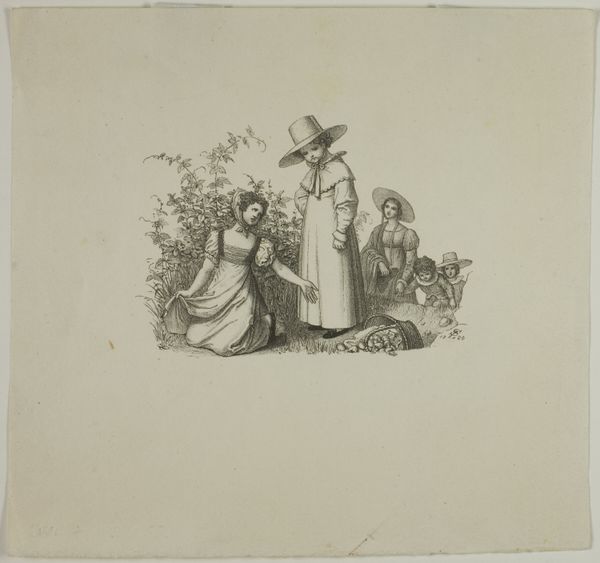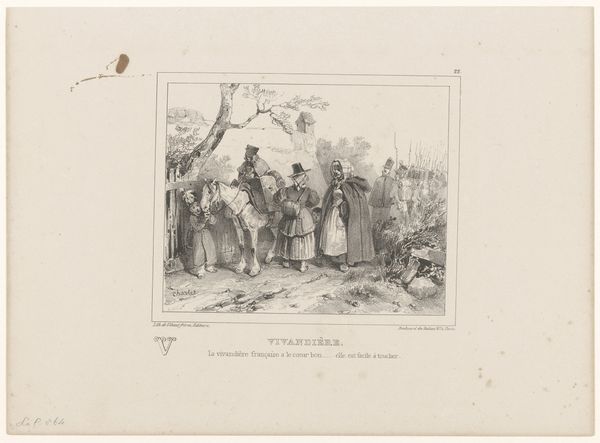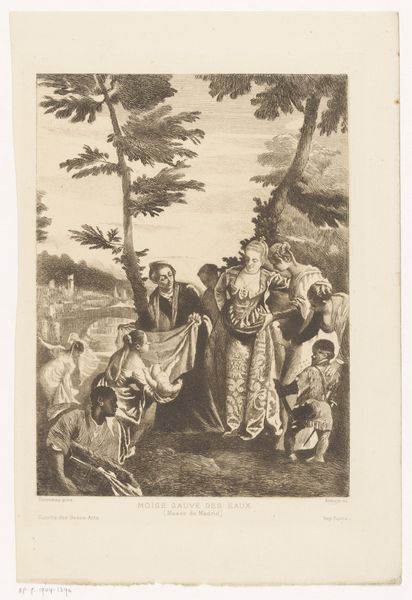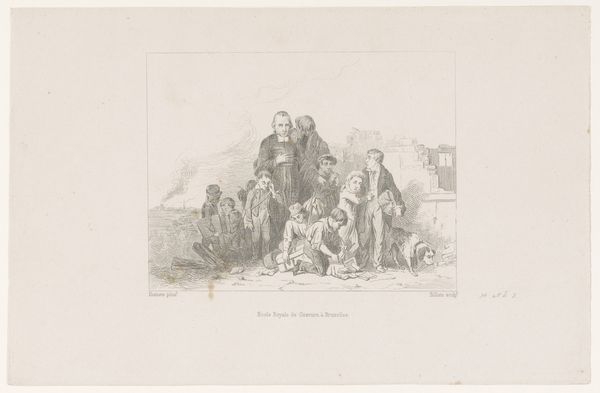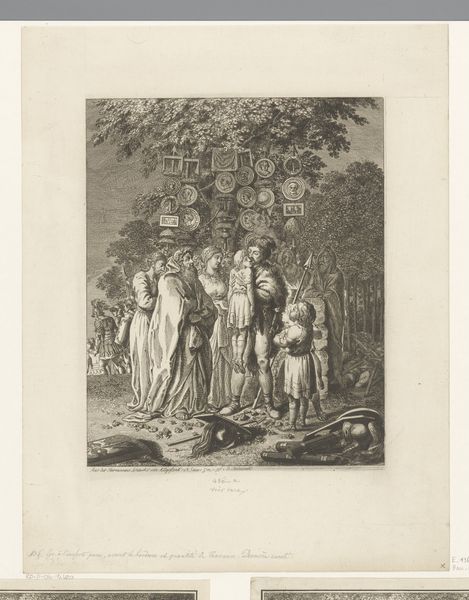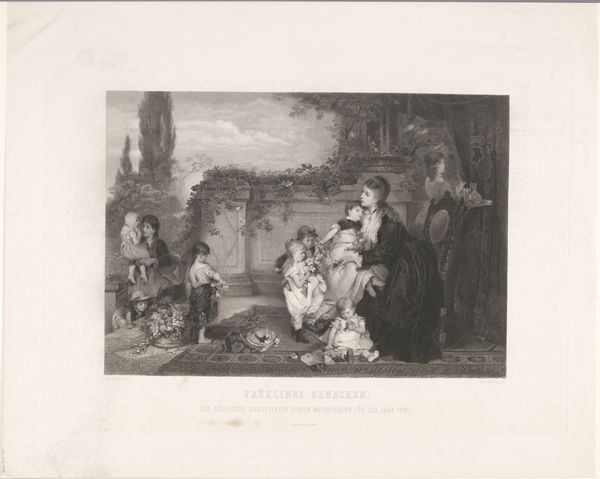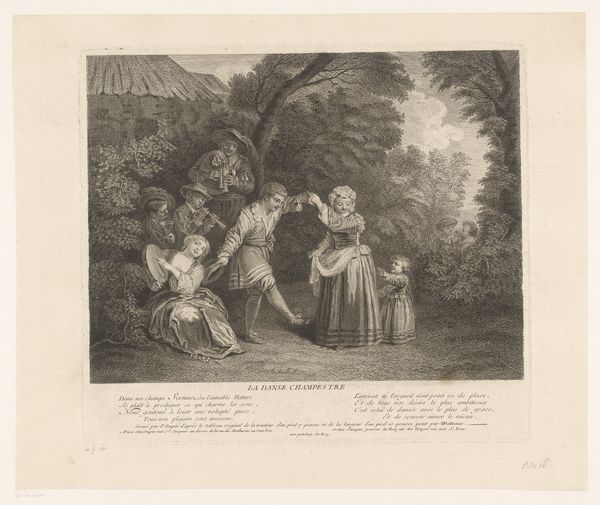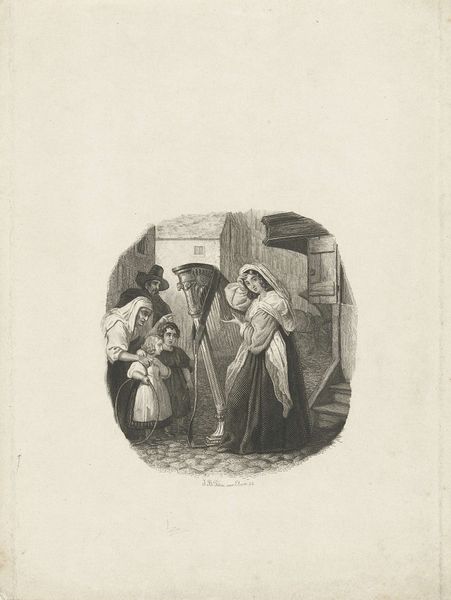
Dimensions: height 188 mm, width 247 mm
Copyright: Rijks Museum: Open Domain
Curator: Welcome. This print is titled "Landschap met Roma familie," or "Landscape with Roma Family," created sometime between 1833 and 1879 by Auguste Numans. The artist used etching and engraving to create this evocative scene. Editor: Immediately striking is the grayness, the near monochrome. It imbues a somber, weathered quality to the landscape and figures. The density of line work gives the impression of almost palpable texture. Curator: Absolutely. The etching and engraving techniques lend themselves well to the depiction of hardship and a life lived in close proximity to the elements. The Roma family depicted here likely held specific connotations in 19th-century European culture—wanderers, outsiders, people living on the margins. What cultural associations might have impacted Numans’ work? Editor: Perhaps it stems from a broader visual vocabulary common at the time—notice the deliberate play with light and shadow to emphasize the rough textures of their garments. Observe, too, how this technique contributes to the overarching feeling of desolation and distance that pervades the image, amplifying its dramatic impact. Curator: It could suggest vulnerability, or conversely, resilience in the face of social biases. Note the family standing together, bundled tightly against the elements, perhaps seeking to insulate themselves against society itself. Editor: Yes, but there's also an ambiguity to their expressions, their gaze, that I appreciate. The artist leaves room for the viewer to project their own feelings onto the scene, inviting speculation about the family’s past and their future. The contrast created here can become its own statement of form, apart from its socio-historical relevance. Curator: By inviting the viewer to ponder the narrative behind the image, Numans elevates what could have been a simple genre scene into a poignant meditation on the human condition. These figures become stand-ins for larger societal issues, don't you think? Editor: Ultimately, what resonates with me is Numans’ ability to construct such a visually powerful image using subtle manipulations of light, form, and texture, each enriching the emotional depth of the piece. Curator: Agreed. It's a testament to the power of art to transcend its own time and place.
Comments
No comments
Be the first to comment and join the conversation on the ultimate creative platform.
